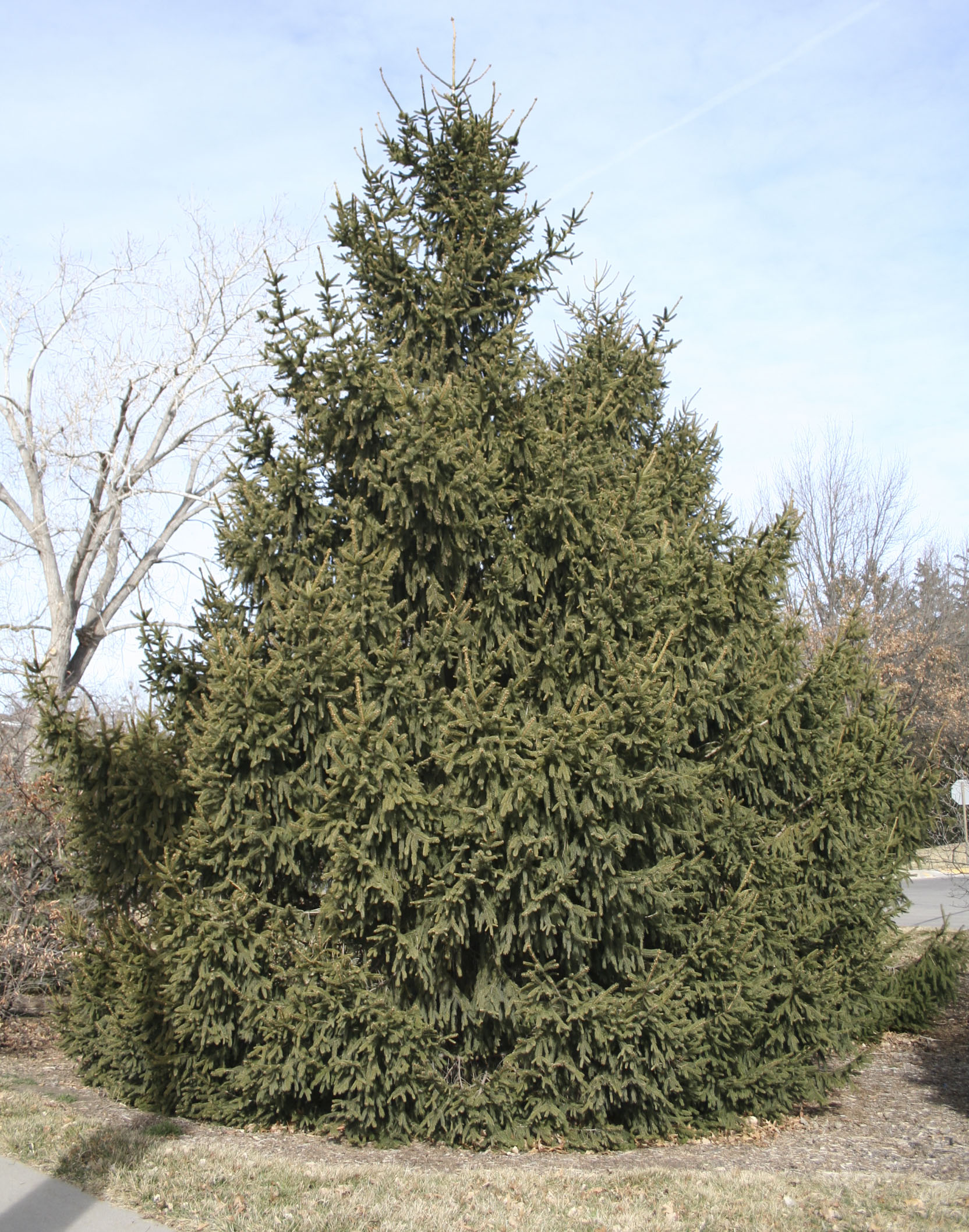Spruce, Norway
Picea abies, Coniferous
Norway spruce is a large pyramidal evergreen conifer native to the mountains of northern and central Europe (including Norway). It has been used extensively as a landscape tree in eastern Nebraska where it’s distinguished by its large size and its pendulous, droopy branches.

Where To Grow

Size at Maturity
| Tree Height | Tree Spread |
| 40-75' | 30-50' |
Tree Characteristics
Norway spruce is a large pyramidal evergreen conifer that can reach 100-150' tall in its native Europe. It is noted for its rapid growth. Primary branches are slightly upturned but secondary branches and branch tips become pendulous as the tree matures. Branches are clad with spirally-arranged, four-sided, needle-like, deep green leaves which are attached at their bases to tiny pegs. Cylindrical seed-bearing cones are large for spruce reaching up to 9" long and hanging distinctly at the ends of branches. Numerous cultivars including dwarfs, narrow types and weeping varieties have been developed.
Wildlife Benefits
Similar to other spruces, Norway spruces sustains a wide variety of wildlife, especially birds.
Utilization
It is an important timber tree in its native Europe.
Additional Considerations
In eastern Nebraska, Norway spruce tends to have few insect and disease problems. Bagworms are perhaps the biggest concern. Although Norway spruce can tolerate normal dry periods, it is one of the least drought tolerant spruces for our region.
Related species
- Serbian Spruce (Picea omorika), native to eastern Europe including Serbia and Bosnia, is a graceful tree with pendulous branches and attractive two-toned needles that give it a silvery cast. It prefers protected planting locations in Nebraska and can grow up to 45’x 20’.
- Oriental Spruce (Picea orientalis) is a dense, conical evergreen native to the Caucasus. It is best known for its very stout but short needles; needs protection in Nebraska; grows 45’x 20’.
Interesting Facts
The genus name Picea is reportedly derived from the Latin word pix meaning pitch in reference to the sticky resin typically found in spruce bark. The species name abies refers to its similarity to the genus Abies (fir species). The tree is the source of spruce beer, which was once used to prevent and even cure scurvy in Europe. Norway spruce is prized as a source of tonewood by stringed-instrument makers and was used by Stradivarius for his instruments.
References
- Tips for planting success
- Developed by Justin Evertson, Kyle Martens, and Denise Wally.